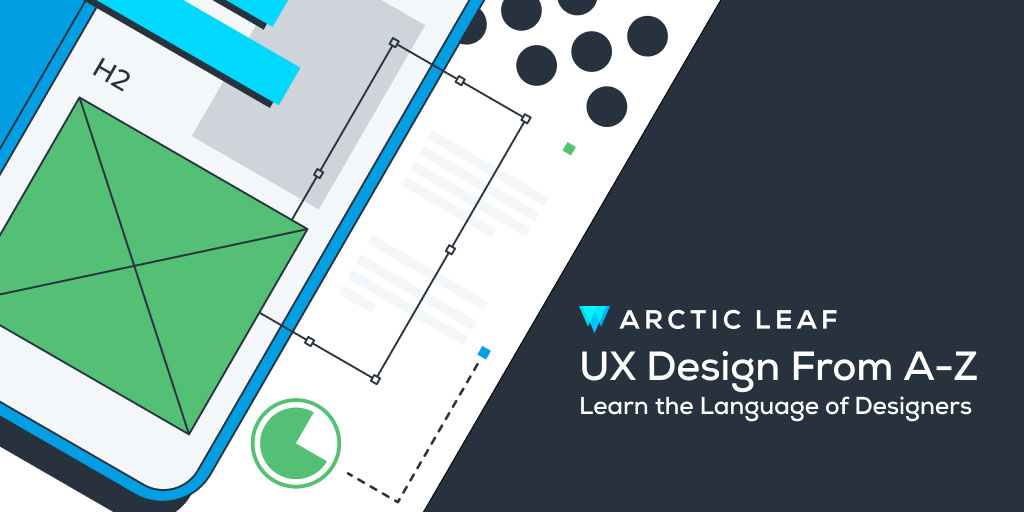The field of UX design is a rapidly changing and increasingly competitive area. Not just for design creative professionals, but also for developers and marketing specialists. Gone are the days when you had only one road to venture down. Now this road has expanded into a multilane highway, with multiple paths available: UI Designer, Product Designer, UX Engineer, Customer Experience Design, User Happiness Architect. The list goes on.
We must ask, “What are UX principles?”
Simply put, UX design principles are the core guidelines that create useful, easy-to-use designs. This is achieved by carefully creating, selecting, and organizing features and elements into designs or products. Every element or feature must have a purpose and placement that is familiar and intuitive to the user. If not, it can distract or confuse them on their journey.
Before we set on an adventure down this highway, we must be aware of certain UX design principles that make up the very backbone of UX design. They are an essential part of learning for fresh designers wishing to pursue this route.
What are these design principles that create a fulfilling product?
Design Principle #1: Design for Usability First
Above all else, a design or product must be usable. It can be easy to focus designs on aesthetics and colors, but there is the danger that the aesthetics themselves could negatively impact a design and render it unusable. It’s easy to go wild and create a trendy, colorful site that looks amazing. But this can get in the way of the user’s experience by creating unnecessary roadblocks, leading to confusion and annoyance.
With e-commerce design, every asset needs to be thought out. Calls-to-action (CTAs) must be visually recognizable. Products need to be easy to navigate. Taxonomies must be clear and structured. If there are any unexpected behaviors or functions, you will lose usability.
Everything must be designed to satisfy the user's expectations and aid them in their journey. This is where creating wireframes helps. Before creating any design components, you should create the foundations of the site. This allows you to understand the different flows a user may take and ensure the site functions work together to create a seamless and logical experience. Once the foundation and functionality of the site are in place, then you can start adding the style.
How do you find your site’s pain points and make it more user-friendly? It’s important to run usability test sessions or perform UX research throughout the UX design phase. This allows you to note any issues users may come across. If issues are repeated over and over again, you will need to make changes.
At Arctic Leaf, we have a dedicated group of designers certified in the latest user experience best practices from Baymard Institute¹ to allow us to create and develop industry-leading websites. There are many other affordable certifications to help you hone your UX skills, such as the Nielsen Norman Group².
Design Principle #2: Design for User Needs
When designing, it’s easy to create something for yourself and forget that someone else will be using what you design. But who are these users, and how do you know what they need?
The meaning of UX is User Experience: the user’s experience of whatever product they are/will be using. Whether it’s a product or a website, this is their journey, not yours. As the designer, you have to cater to the user’s expectations and design for their needs throughout the design process.
Implement User Testing
One way to understand what the user needs is by implementing user testing. This is done by interviewing a test group, gathering their thoughts, and understanding how they interact with a product based on specific use cases. This is good for implementing new ideas or identifying issues in user flows.
It does require preparation time and resources to gather this data. Another way to gather data is by adding user surveys on a website. Surveys are tailored question flows set to appear on certain devices and web pages based on the data you need to gather. This is perfect if you want an organic, hands-off method as you can set it and forget it, then review the users’ answers once the survey period has concluded.
The tool we recommend is HotJar³, an all-in-one suite for gathering digital experience insights and behavior analytics. This allows us to use the many methods of UX data gathering available such as heatmaps, user recordings, user feedback, and surveys and interviews.
Always remember: Never assume you know what a user wants when you can get the data to back it up.

Design Principle #3: Design for Accessibility
Accessibility has become increasingly important in UX design. It is the designer's responsibility to make sure their designs are accessible to as many users as possible, especially ones with disabilities. But how do you incorporate accessibility principles into the design phase?
Your users expect a problem-free experience, so designs need to be free of navigation obstacles and loss of functionality. This means factoring in the contrast of colors, text sizing, and how users with visual impairments may use the website.
Figma, a popular design platform, has many great plug-ins available to ensure you are meeting minimum web accessibility standards, ranging from color contrast checkers to color blindness simulators.

Design Principle #4: Use Simple Language
Your users are real people, not robots (okay, some might be bots, but we’re not designing for them), which means the language and copy you use on a website needs to be written in simple language. Gone are the days of using sterile, jargon-first copy. Overly technical terms and flowery language only obfuscate user experience (unless that is the audience you are writing for - see Principle no.2). Not only is simple language easier to understand, but it also helps with the user-friendliness of your design.
Further, error messages need to explain what the error is. The user needs as much feedback about the errors they encounter and how to recover as quickly as possible.
If you don’t consider yourself much of a wordsmith, you can use AI tools like ChatGPT to generate copy for navigation taxonomy, page content, and other content marketing⁴. To avoid the AI-generated copy sounding “fake” due to the algorithms, recruit other designers and copy professionals into your design process to review the content for tone, structure, and brand alignment.

Design Principle #5: Remain Consistent
You don’t always need to “redesign” the wheel. There are plenty of examples of tried and tested designs and elements that you can fall back on. Many users are familiar with these design elements and rely on them to guide them or get them out of problems.
During the design phase, the best way to keep consistency and remain time-effective is to utilize templates and components. In Figma, you can create components and variables for commonly used content sections. This means you can reuse designs and quickly apply changes to style and components with UX best practices already in place.
As with any product, the user shouldn’t have to relearn accepted standards. They often don’t have the patience and will abandon your product if they feel it’s not worth the energy. The functionality of your designs should be similar to the ones they’re already interacting with. By creating a cache of variable content, you can tweak existing experiences based on the clients’ expectations and requirements. This means consistent, functional designs in shorter amounts of time, streamlining your design process and delivering better results for your client.

Design Principle #6: The User Is In Control
One of the most important aspects of user experience is understanding that the user is in control of their experience, almost like a “Choose your Own Adventure” book. The user gets to pick which adventure they take to reach the finish.
For e-commerce, this would be a website. The user must find the item they would like to purchase, navigate their way to the checkout, and complete their purchasing adventure. Along the way, there are many pitfalls and obstacles they must navigate. Many of these pitfalls and obstacles can be avoided with the help of a skilled designer building around them, or removing them entirely. This is where the designer gives hints or makes intuitive design references that allow the user to recover from errors and overcome obstacles with ease.
Implementing certain features on web pages gives the user control. These features could be tooltips, auto-populating fields at checkout, and even something as simple as remembering search results. This creates a more enhanced, rewarding user experience.
The User Experience Design field isn’t as unfamiliar as you might imagine. It is a road well traveled. Most of these design principles are implemented into everyday products that benefit us all. These represent a sliver of the many principles of UX design, but are some of the most important. Incorporating these strategies into your design will help you avoid common pitfalls of design. This ensures a fulfilling and positive experience for your users and keep them coming back for more.
If you have any other questions about any UX Design, or feel your website could benefit from a professional touch, please feel free to reach out to us directly at info@arcticleaf.io.
──────────────────
¹Baymard Institute - https://baymard.com/
²Nielsen Norman Group - https://www.nngroup.com/
³HotJar - https://www.hotjar.com/
⁴Harnessing the Power of AI: Content Marketing Edition | OnTap Lite - https://www.arcticleaf.io/learning-center/ontap/aiandcontentmarketing



